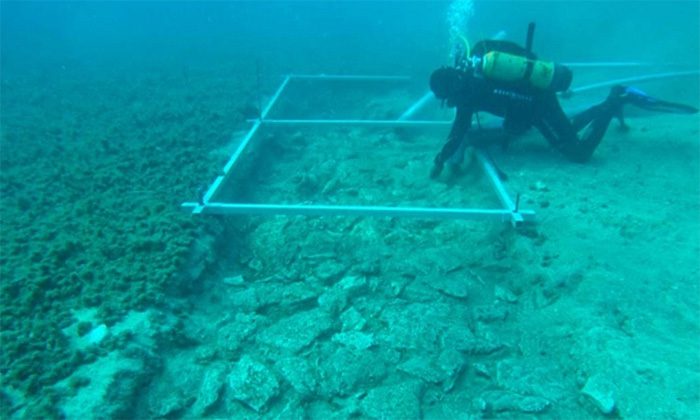Researchers Unexpectedly Discover a 7,000-Year-Old Road Linked to an Ancient Site on Korčula Island in the Adriatic Sea.
Divers explore the remains of the ancient road. (Video: University of Zadar)
The University of Zadar announced the discovery of an archaeological site at the Soline Neolithic site, submerged underwater and dating back to around 5000 BCE. Located near the village of Soline, previous dives at the site yielded numerous artifacts including pottery, tools, animal remains, and plant species. However, researchers recently found an ancient road. They traced the path and realized it connected the prehistoric settlement of the Hvar civilization (5000 – 2500 BCE) with the coast of Korčula Island, as reported by Ancient Origins on May 8.
According to team leader Mata Parica from the University of Zadar, he and his colleagues first identified carefully stacked stones forming a stretch about 4 meters wide. Subsequently, carbon dating revealed wood fragments collected from the mud at the seabed. The research team believes the road was constructed between 4900 and 3900 BCE. Around 5000 BCE, the area now known as Croatia was home to several civilizations, including Starčevo, Vinča, and Danilo-Kosovo. However, previous dives at this site only uncovered pottery from the Hvar civilization and many other artifacts, leading the archaeologists to conclude that they were the ones who built the road.

Around 5000 BCE, this area was home to several civilizations.
Professor Igor Borzić, the project leader, noted the peculiar structure in Gradina Bay and called the diving team to the Soline site. At depths of several meters, divers found blades, stone axes, and mortars, all left behind by some of the earliest farmers in Croatia. Rising sea levels have submerged the offshore site under 4 to 5 meters of water. Next, archaeologists will focus on further investigations of the submerged site.
The history of Korčula Island is closely tied to the explorer Marco Polo and Greek invaders. The island features impressive architecture, including St. Mark’s Church and the walls of the old town, dating back to 1214.


















































